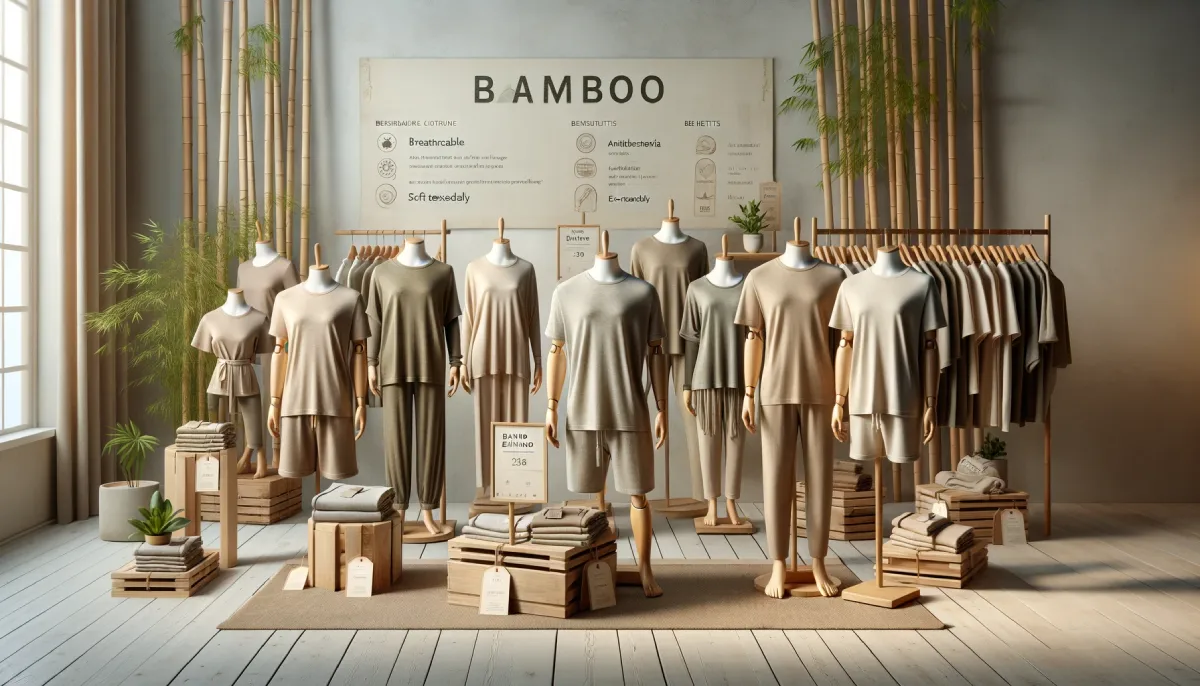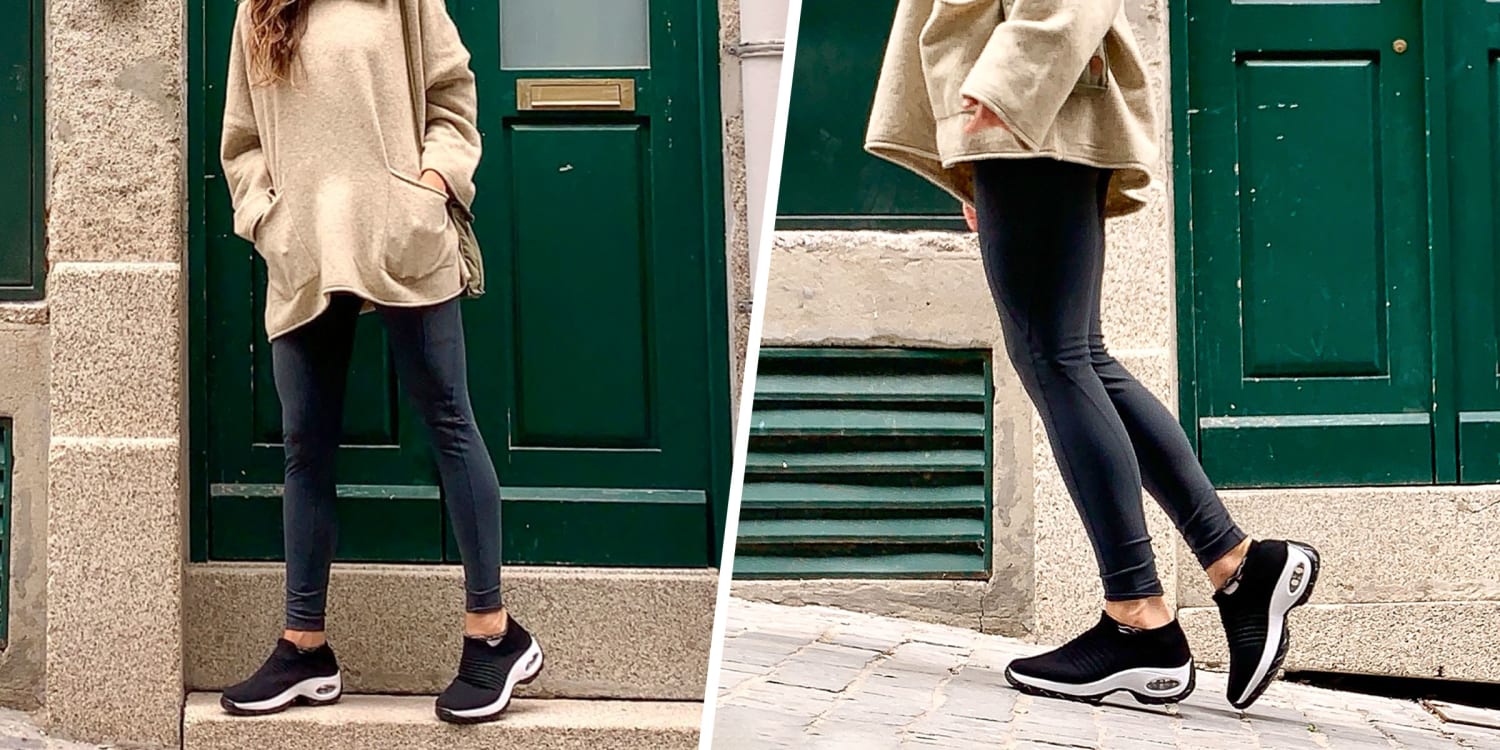In an era where sustainability and comfort are becoming paramount, bamboo clothing is emerging as a significant player in the fashion industry. This eco-friendly alternative to traditional fabrics offers a myriad of benefits, from breathability to sustainability, making it an ideal choice for the environmentally conscious consumer. Bamboo fabric, often referred to as “organic silk,” is not only incredibly soft but also boasts impressive environmental credentials. This article delves into the various aspects of bamboo clothing, highlighting why it is a preferred choice for those seeking comfort and eco-friendly options in their wardrobe.
The Environmental Impact of Bamboo Clothing
The most environmentally friendly technology is of little benefit unless it is in widespread use But fabric made from bamboo scores above other conventional textiles when it comes to limited environmental footprint. This is because bamboo, which requires few inputs, is its own pest deterrent and, for the most part, nutrient-independent. Therefore, it doesn’t require pesticides or fertilisers, and uses a fraction of the water needed for cotton, with no chemical runoff into the environment. And a bamboo grove prevents soil erosion and promotes good soil structure. Bamboo also has one of the most rapid growth cycles known to plants – harvestable in 3-5 years and thereby having a continuous and perpetual supply. Plantations with bamboo can also play a significant role in carbon sequestration – more than equivalent tree plantations. Bamboo has the potential to take up more carbon dioxide and release more oxygen.
Bamboo fabric’s production process also adds to its ‘green’ reputation. Mechanical processing is one method of manufacturing bamboo into fabric. This involves crushing the bamboo plant and using naturally occurring enzymes to break down the plant into loose filaments. It is less destructive to the environment than chemical processing. As another example of the environmental sustainability of bamboo, some fertiliser and dyeing processes produced by specific closed-loop production systems recycle water and even solvents. The machines and production processes are designed in such a way that nothing produced is wasted. This is another example of the eco-friendly considerations attracting those interested in more sustainable fashion options to bamboo. Overall, bamboo draws attention for its low environmental footprint. This low footprint promotion is seen as significantly contributing to the push towards more sustainable clothing.
The Comfort and Breathability of Bamboo Fabric
Bamboo fabric is the most luxurious clothing material on earth. Its silky soft feel is often compared to the finest of organic silk. Bamboo fabric does not need any chemical treatment because its fibres are naturally very smooth and round, which means that they do not irritate the skin, even for people who suffer from very sensitive skin and/or allergies. And don’t forget: bamboo fabric is also very soft. In fact, softness is one of its main technical attributes. Some people even consider it softer than cotton. The natural elasticity of bamboo fibres provides a gentle stretch that allows your bamboo garments to fit well and to keep their shape over time. Softness and elasticity make bamboo great for everyday clothing, loungewear and sportswear.
Bamboo fabric score highly in the breathability test. Compared with many other traditional material, it is indeed quite breathable. When sweat absorbs the air to evaporate, it helps to cool your body. Many sweat will flow to your limbs, so a breathable fabric will draw in more air and the air will permeate to the sweat on your skin. The ultimate answer to our question “is bamboo fabric breathable” is yes, bamboo fabric provides the natural functions of steam permeability and moisture absorption, making it an excellent choice for all seasons to keep you cool in summer and warm in winter. Bamboo fabric has natural steam permeability to pull the sweaty water away from the skin and allow the sweat to be quickly evaporated, so you won’t feel too cold and wet, making them more suitable for sportswear.
Health Benefits of Bamboo Clothing
On top of comfort and breathability, it has many other health benefits. A major reason bamboo clothing is considered hypoallergenic is that, unlike many other textiles, it does not contain any harsh chemicals or dyes during production that may cause skin irritation. Making it a great material for those who have sensitive skin or allergies. Say goodbye to any worry of smelling bad! Bamboo fabric has antibacterial qualities, which in terms of apparel will mean where odour-control properties are favoured, that can contribute to odour-control and ultimately keep the fabric fresher for longer. This antibacterial quality is particularly useful in activewear or underwear where staying fresh is preferred. The natural UV protection it offers compounds this list of health-giving properties.
This regular regulation of temperature also has a positive effect on health and well-being: left unchecked, overheating will lead to health problems. Additionally, the anti-fungal and anti-microbial qualities of bamboo keep the skin dry which is a vital health factor since dry skin helps avoid fungal infections and rashes. These health benefits of wearing bamboo clothing, over and above simple comfort and functionality, make bamboo the best health option and not just an eco-friendly one. Growing awareness among us consumers about the health issues related to our clothing choices is likely to be an additional reason why bamboo is bound to remain popular.
The Fashion Potential of Bamboo Clothing
Function and fashion shouldn’t be mutually exclusive concepts. The world of high fashion is also catching on to bamboo as an increasingly fashionable fabric. While it’s uncommon to see bamboo in haute couture, some designers have attempted to incorporate bamboo fabric into their collections. Given that bamboo fabric drapes like a dream and is flattering on most people, it’s easy to see why. The natural sheen of the fibres adds an element of sophistication similar to organic, biodegradable silk. But what really makes bamboo stand out as a textile option is its versatility. Bamboo fabric can be dyed in almost any shade imaginable, rendering it suitable for everything from basic, no-frills casual wear to the most sophisticated outfits. A bamboo clothing line could include ready-to-wear T-shirts and leggings for the demographic of young and hip, along with uptown and silver-haired fashionistas. Not only could it be sustainable, it could also be stylish, fashionable and, for the lack of a better term, ‘cool’.
From dresses and shirts to pants and socks, bamboo fabric can be a part of any sort of style. Bamboo can also be blended with other fibres, like cotton or spandex, to make clothing more durable and stretchy. This makes it a good option for activewear. Bamboo fibres are also light and breathable, and great exercise wear should be too. Consumers are increasingly looking for sustainable clothing options, and it seems like demand for bamboo clothing is only going to increase. More designers will inevitably look into this viable alternative. This is proof that the fashion industry is starting to move towards more eco-friendly materials, without sacrificing style or quality.
Challenges and Considerations in Bamboo Clothing Production
Bamboo’s biggest advantage is also a drawback: most production methods put bamboo through chemical processes to create bamboo rayon. These processes use nasty chemicals such as carbon disulfide which, though not necessarily toxic to humans, is extremely harmful to humans and wildlife alike when released into the environment. Consequently, this process can counteract most of the environmental advantages of bamboo cultivation. But that is changing. More modern production techniques, such as the lyocell process, use closed-loop solvent-recovery techniques that do away with the production of excessive byproducts. These processes pose far less harm to the environment and consumers should shop accordingly.
Another issue is certification and regulation of bamboo fabrics which is so essential to ensure the authenticity of bamboo fabrics. Not all bamboo fabrics are created equal, and many are labelled as eco-friendly for no reason. OEKO-TEX and the Global Organic Textile Standard (GOTS) are certifications required for the fabrics to be classified as environmentally friendly or biodegradable. The same applies for brands, who must contribute to making the environment a better place for everyone in every possible way – from the cultivation of bamboo to the final treatment of clothes. Thus, the transparency from brands is also important for consumers to make an informed decision. While there are several benefits to wearing bamboo clothing in the daily lives, it is important for us to address these challenges so that products are rightly evaluated as greener and eco-friendly in totality. Fostering the right knowledge about the cons and pros of bamboo fabric helps in bringing in sustainable production and consumption of bamboo clothing. Eco-wear is not just one of the fashion trends but an instinctive desire to take care of ourselves and our homeplanet.
The Future of Bamboo Clothing in Sustainable Fashion
It does seem then, that bamboo could have a future in sustainable fashion. Sustainability is trending, and the rapid pace of innovation in the methods of fabric production, coupled with growing customer expectations regarding sustainability, promises further penetration of bamboo fabrics on the market. Many brands are shifting their focus towards sustainability, and bamboo clothing fits very well into this uphill movement. Besides, with ongoing advances in biotechnology and improvements in sustainable farming techniques, the ecological advantage of bamboo growing and processing can still be expected to be bolstered further, moving bamboo fashion lines closer to the best choices in ecological terms.
Moreover, over time, raising awareness and educating the public on the benefits bamboo clothing will offer, and emphasising the merits of purchasing bamboo fabric for both environment and health, will aid in increasing the popularity of this fabric. As the fashion industry focuses more attention on being sustainable, and consumers become increasingly conscious about what goes into the products they buy, bamboo fabric will likely appeal to more and more customers. Innovations in marketing involving fashion houses and environmental organisations can be coordinated, coupled with research at top universities, to ensure a sustainable future of bamboo clothing. Over the next century, the fashion industry as we know it will be transformed, offering a more sustainable, comfortable and stylish solution to eco-conscious consumers around the world.
Conclusion
Bamboo clothing represents a harmonious blend of sustainability, comfort, and style. Its minimal environmental impact, coupled with its luxurious feel and health benefits, makes it an ideal choice for the modern, eco-conscious consumer. Despite the challenges in production, advancements in technology and increased consumer awareness are paving the way for a more sustainable fashion industry. As bamboo clothing continues to gain popularity, it promises to redefine the future of eco-friendly fashion. Embracing bamboo clothing is not only a step towards a more sustainable lifestyle but also a commitment to a healthier and more comfortable way of living.



